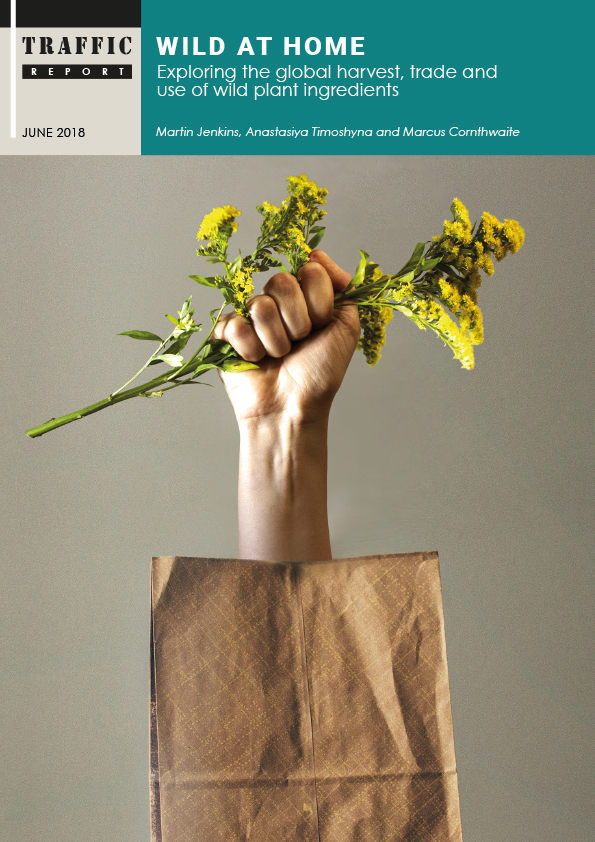Wild at home: an overview of the harvest and trade in wild plant ingredients
 A new TRAFFIC study has drawn attention to the wild plant ingredients used in everyday products and the need for their traceable, sustainable and ethical sourcing and trade. Wild at Home: An overview of the harvest and trade in wild plant ingredients, demonstrates how sustainable wild plant harvesting can contribute to wider wildlife conservation goals and why global industry must adapt. People are utterly reliant on plants for their survival, yet few appreciate that many of the consumer products in common use—ranging from herbal remedies, food, and drink to cosmetics, health supplements, and even furniture—derive from wild harvested plants.
The report highlights a dozen wild plant products consumers and business should look out for in products they use, including liquorice, frankincense, gum arabic, juniper, pygeum, goldenseal, and shea butter. Of the roughly 30,000 plant species with documented medicinal or aromatic uses, approximately 3,000 are found in international trade, an estimated 60–90% of them harvested from the wild—often with little consideration given to ensure the sustainability of supplies.
A new TRAFFIC study has drawn attention to the wild plant ingredients used in everyday products and the need for their traceable, sustainable and ethical sourcing and trade. Wild at Home: An overview of the harvest and trade in wild plant ingredients, demonstrates how sustainable wild plant harvesting can contribute to wider wildlife conservation goals and why global industry must adapt. People are utterly reliant on plants for their survival, yet few appreciate that many of the consumer products in common use—ranging from herbal remedies, food, and drink to cosmetics, health supplements, and even furniture—derive from wild harvested plants.
The report highlights a dozen wild plant products consumers and business should look out for in products they use, including liquorice, frankincense, gum arabic, juniper, pygeum, goldenseal, and shea butter. Of the roughly 30,000 plant species with documented medicinal or aromatic uses, approximately 3,000 are found in international trade, an estimated 60–90% of them harvested from the wild—often with little consideration given to ensure the sustainability of supplies.
